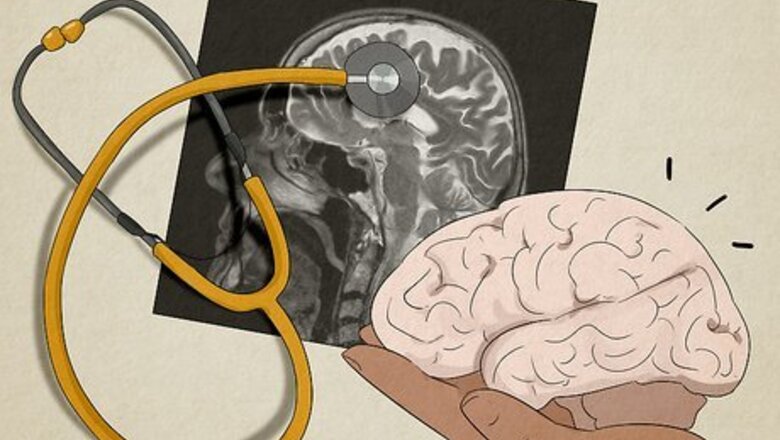
views
X
Trustworthy Source
PubMed Central
Journal archive from the U.S. National Institutes of Health
Go to source
If you’re willing to put in the years of schooling and training required, you’ll have the opportunity to improve the lives of countless patients in your job as a neurologist. To get you started in the right direction, we’ve answered your most common questions for embarking on this tough but ultra-rewarding career.
What does a neurologist do?
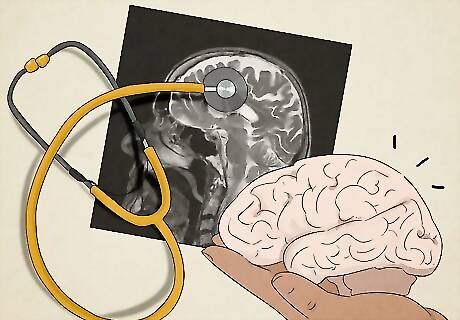
Neurologists diagnose and treat conditions affecting the brain and nervous system. As a neurologist, you’ll perform tests on mental status, vision, reflexes, gait, and more. You’ll help treat diseases like brain tumors, stroke, epilepsy, Lou Gehrig’s disease, multiple sclerosis, Alzheimer’s, and others.
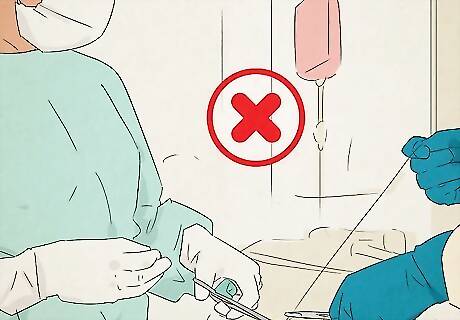
Neurologists don’t perform surgery. That role goes to neurosurgeons. However, you may perform procedures like lumbar punctures (LP) for cerebral spinal fluid analysis, nerve conduction studies, and electromyography (NCS/EMG).
How many years does it take to become a neurologist?

On average, you’ll study for 13 years to become a neurologist in the U.S. While you may be able to shorten your undergraduate education by 1 year or choose a program that offers a combined undergrad and medical studies (6-8 years), there are no real “shortcuts” to training in neurology. You’ll do 4 years of undergraduate study at a college or university. If you accumulate college credits in high school, you may be able to graduate in 3 years. You’ll attend med school for 4 years to get either an MD (Doctor of Medicine) or DO (Doctor of Osteopathic Medicine) degree. You’ll intern for 1 year in medicine or surgery, or you’ll intern for 2 years in pediatric neurology. You’ll spend 3 years in your residency program doing specialty training.
What should I major in to become a neurologist?
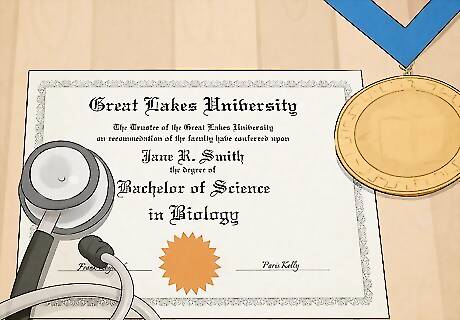
Choose a science-related field. While there is no specific major required to go on to med school, demonstrating a passion for neuroscience through your undergraduate career can boost your application and give you a strong foundation for your graduate studies. If your school doesn’t directly offer neuroscience, you could choose a major like biology, physiology, or chemistry to gain a broader background in natural science and the human body.

Major in the humanities or social sciences. If you feel really passionate about the subject and want to give yourself a boost at patient communication, try a non-science major. You can pick a major like English, communications, or even art history and still become a neurologist! Just keep in mind that it might be more difficult to prepare for the Medical College Admission Test (MCAT) without having majored in science. If your school allows it, try to still take courses that will give you a broad scientific background. For instance, you should try to take courses in physics, human biology, inorganic and organic chemistry, and psychology. If you majored in a non-science field or are looking to become a doctor later in life, it’s totally possible. You can use your life experience and different perspective to stand out in your med school applications.

No matter your major, participate in a pre-med track. “Pre-med” usually isn’t a distinct major. Instead, it’s a distinction you can make with your university and advisor to make sure you’ll get the advising info and courses you need in order to meet med school entrance requirements. Each school will have different requirements to fulfill on the pre-med track, but you’ll usually have to complete substantial human biology coursework.
How do I prepare for medical school?

Pass the prerequisite courses for medical school. Most medical schools require certain prerequisite classes, regardless of major. Check your prospective medical school's requirements before you apply to make sure you have finished each of the prerequisites. Try to maintain at least a 3.7-3.8 GPA in your prerequisite courses. You’ll want to demonstrate a strong academic performance, and a 3.7-3.8 GPA will put you in the average range for students admitted to most med schools.

Gain experience in clinical settings while you’re in college. You can build a stronger application by volunteering as a hospice care worker or taking a job as a hospital scribe or medical assistant in a clinic or hospital. While you won’t get to directly treat patients, administrative work and learning about how the healthcare center works will teach you about various approaches to patient care. Find a position through your school’s career center, your pre-med advisors, or a national association looking for volunteers (like the Hospice Foundation of America).

In your junior undergrad year, take the MCAT. To give yourself the best shot at competitive med school programs, you should aim to score close to the highest possible score of 528 (the average score for students admitted to med school is 510). To prepare for this 6+ hour exam, take practice tests and check out the free guides offered by the Association of American Medical Colleges (AAMC), the organization which administers the test. You’ll demonstrate knowledge in four categories on the MCAT: biochemical foundations of living systems, chemical and physical foundations of biological systems, psychological/social/biological foundations of behavior, and critical analysis and reasoning skills.
What will I learn in med school?
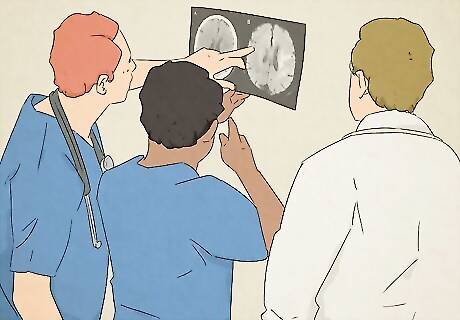
In your first 2 years, you’ll learn about the human body. In a class setting, you’ll focus on one physiological system at a time (such as the nervous system). While it's more common for neurologists to get an MD (Doctor of Medicine) degree, you can also choose a DO (Doctor of Osteopathic Medicine) degree if you’re interested in learning an alternative, holistic, mind-body-spirit approach to patient care and medicine.

In your 3rd and 4th year, you’ll explore different medical fields through hands-on experience. You’ll be able to sample neurology work during your clinical “rotations.” During rotations, you’ll shadow doctors and participate in training in real healthcare facilities. Pay attention during your neurology rotation to decide if you enjoy the work environment and to pick up introductory skills. If you don’t like your neurology rotation, don't panic! You may have learned that neuroscience is not the right fit for you. Use your other rotations to find a more appropriate career choice.
How do I get licensed to practice neurology?
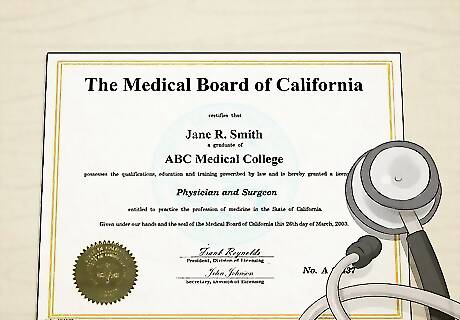
Take the United States Medical Licensing Examination (USMLE) if you’re in an MD program. Take the first parts of the exam while you’re in med school. During the exam, you’ll demonstrate fundamental knowledge of medicine and clinical skills. Take Step 1 while you’re in your first or second year of med school. Wait to take Step 2 CK (Clinical Knowledge) until your third or fourth year when you’ve had more practice with clinical skills. Once you’ve graduated, you can take Step 3 of the USMLE to gain your license.

If you’re in a DO program, take the Comprehensive Osteopathic Medical Licensing Examination (COMLEX-USA). Like the USMLE, the COMPLEX-USA will assess your essential knowledge of medicine and test your clinical skills. You can take Level 1 after your first year of med school. Take the Level 2-CE and Level 2-PE tests after your second year (in any order). Take the Level 3 exam after you’ve received your graduate degree.

Once you’ve passed a medical licensing exam, gain certification with your country's neurology board. To be eligible for certification, you’ll need to have graduated from medical school, possess a valid medical license, demonstrate passing grades in a neurology and subspecialty exam, and complete a set clinical hours.
What happens after med school?

Intern for one year at a hospital or medical center. After you obtain your graduate degree, you’ll work alongside fully-trained doctors and medical staff doing your first-year residency (also called an internship). As an intern, you’ll practice general medicine (rather than specializing in neurology) and develop clinical skills. Internal medicine interns will primarily focus on diagnosing, treating, and taking care of adult patients. You’ll apply for your internship and residency through “the Match,” which is run by the National Resident Matching Program. To apply, you must fill out an application through the Electronic Residency Application Service (ERAS). Compile your CV and letters of recommendation early so you can send them to ERAS when you're ready. Include your educational history, internships completed, research experience, and list of references. Once you’ve submitted an application, you may be invited for interviews at residency programs. Next, you’ll rank your top choices of residence programs, and a computer algorithm will match programs and applicants to optimize top choices. You’ll find out your placement results on Match Day, which occurs in March every year.

Complete a three-year residency specializing in neurology. Depending on what your first-year internship placement allows, you’ll either continue at the same hospital or apply to another facility for the next years of your residency. These next three years are different than the internship because you’ll begin to work directly in neurology rather than general internal medicine. You’ll learn from specialists in the field as you see patients and continue to develop your clinical skills.

For even more specialized training, complete a fellowship. To set yourself apart from other graduates in the job market, you can train for 1-4 more additional years. Apply to a teaching hospital for a fellowship in an area like child neurology, clinical neurologist , neurodevelopmental disabilities, etc. When you’re considering a fellowship, evaluate whether the potential higher-income you’ll get from further specialization will outweigh the cost of spending additional years receiving a lower salary and/or taking on debt as you train.
How do you find jobs as a neurologist?

Apply for positions through online job boards. Upload a resume emphasizing any past research experience and create a customized cover letter that demonstrates your thorough research of that practice/hospital. Since most hiring managers are doctors, don’t be afraid to send multiple follow-up emails in case a busy doctor misses an email.

Network and get referred into positions through your connections. Attend neurology conferences around the country to get in touch with others in the field and keep up-to-date on neurology developments. Stay in touch with current and former colleagues as well as your school’s alumni to build a reputation as a competent neurologist and pleasant work partner.
How much money do neurologists make?

Fully-trained neurologists make over $267,000 per year. If you’re a more specialized neurologist or if you’re practicing in an area with fewer doctors (like the Midwest), you’ll tend to make more money. During your residency, you’ll make around $60,000 per year, with pay increases as you gain more experience.



















Comments
0 comment